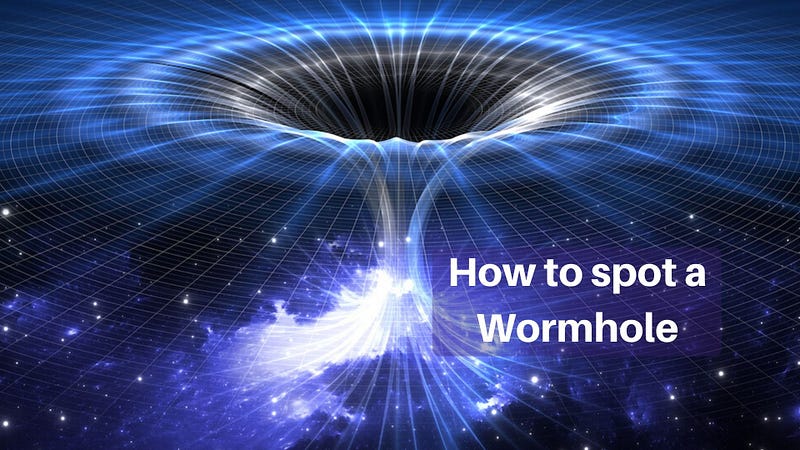Exploring the Theoretical Concept of Wormholes in Space
Written on
Chapter 1: Understanding Wormholes
Wormholes, despite being a concept rooted in theoretical physics, have captured the imagination of scientists and the public alike. These hypothetical tunnels through spacetime could permit rapid travel between distant points in the universe and have been a staple of science fiction narratives. Their foundation lies within the framework of Einstein’s General Relativity, where they are formally referred to as Einstein-Rosen bridges.
Researchers are actively exploring how to identify these enigmatic structures. Notable physicists Dejan Stojkovic from the University at Buffalo and De-Chang Dai from Yangzhou University have proposed a method for locating wormholes, as detailed in their research published in Physical Review D.

Section 1.1: The Mechanics of Detection
The detection model constructed by Stojkovic and Dai centers around Sagittarius A*, the supermassive black hole at the heart of the Milky Way. While there is no definitive proof of a wormhole existing in proximity to Sagittarius A*, the extreme gravitational fields around supermassive black holes make them promising candidates for wormhole exploration.
The scientists theorize that if a wormhole were present, it would impact the orbits of nearby stars. Specifically, the gravitational pull from a star located on the opposite side of the wormhole would influence the star situated near Sagittarius A*.
Stojkovic elaborates: “If you have two stars, one on each side of the wormhole, the star on our side should feel the gravitational influence of the star that’s on the other side. The gravitational flux will go through the wormhole. So if you map the expected orbit of a star around Sagittarius A*, you should see deviations from that orbit if there is a wormhole there with a star on the other side.”
How to Find a Wormhole: This video explains methods of detecting wormholes, focusing on the theoretical underpinnings and practical challenges involved.
Section 1.2: The Challenges of Traversability
Despite the intriguing prospects of wormholes, Stojkovic cautions that navigating through them, as depicted in many science fiction stories, may be far from feasible. “Even if a wormhole is traversable, people and spaceships most likely aren’t going to be passing through,” he states. “To keep the wormhole open, you would realistically require a source of negative energy, which we currently do not know how to harness.”
The researchers advocate for monitoring star S2, which orbits Sagittarius A*, to detect any unusual movements that might suggest the presence of a wormhole. However, current observational techniques lack the sensitivity required to discern such subtle changes.
To enhance the precision of these observations, Stojkovic proposes that astronomers should gather extensive data on S2 over longer periods while refining their tracking methods. This advancement in observational technology may not be too distant, potentially achievable within the next few decades.
Can We Tell if There's a Wormhole in the Milky Way?: This video discusses the challenges and possibilities of identifying wormholes in our galaxy.
Chapter 2: Theoretical Implications of Wormholes
While the ability to conclusively prove the existence of a wormhole may remain elusive, detecting anomalies in S2's orbit could hint at their presence. Stojkovic remarks, “When we reach the precision needed in our observations, we may be able to say that a wormhole is the most likely explanation if we detect perturbations in the orbit of S2. But we cannot definitively claim that it is a wormhole; other factors could be influencing the motion of this star.”
Ultimately, the exploration of wormholes continues to be a captivating subject in theoretical physics. As Stojkovic aptly points out, they represent “a legitimate solution to Einstein’s equations,” underscoring their significance beyond mere science fiction.